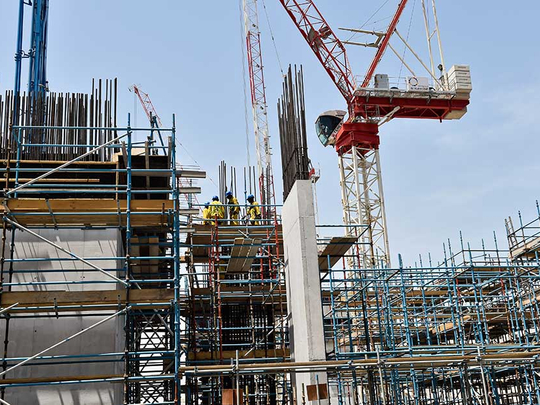
Dubai:The upcoming interest rate hikes in the US — and by extension here — will pose problems for the local property market as developers try to raise funds on projects.
The higher cost factor will also leave a dent on contractors in how they manage their cash flow needs.
“In December, the total credit to construction and real estate expanded 12.6 per cent year-on-year,” states the latest Phidar Advisory report.
“However, this is likely due to multi-year development cycles that can create a delay between real estate and debt cycles.
READ MORE
UAE follows US in raising interest rates
Money managers drawn towards Indian stocks
Expats to see better money transfer rates this year
“Additionally, this data does not capture the terms under which lending is provided, like the increasing cost of debt as measured by Eibor (Emirates inter bank offered rate). It is questionable whether construction and real estate credit can continue to grow at the current pace.”
More so, as a further two rate hikes are likely in the US this year, based on the guidance provided by the Federal Reserve. If so, it would make debt dearer in the UAE as well.
Currently, the share of construction and real estate in the total credit portfolio of UAE banks “has been increasing and is now above 18 per cent”.
Some of the big-name local developers have already raised funds or recently managed to refinance the terms of their existing debt exposures. That may tide them over for the short-term, but new funds will be needed to take on the mega projects they have lined up ahead of the Expo 2020 deadlines.
Even if developers have already refinanced at lower rates, “(Future) interest rate hikes will still have an impact on the market,” said Jesse Downs, Managing Director of Phidar. “Even if developers have secured favourable rates, this is only one part of the equation.
“Developers are providing a form of shadow financing through post-handover payment plans and this can help to prop up the primary market in the short term. But it doesn’t help the secondary market for completed properties.
“The primary and secondary markets are connected because the products are substitutes that provide benchmarks for market return expectations. So if completed property prices decline, eventually this can impact the primary product through the disparity of risk-adjusted returns.”
Phidar’s report takes the position that the current activity in property sales and the pullback from value declines could be a “false start”. Other consultancies have suggested that enough activity is taking place at the mid-market level and which can be sustained to support a gradual recovery for the Dubai property market.
“(Dubai’s) apartment sale prices declined only nominally this quarter and volumes increased, which could be mistaken for an impending recovery, but the market fundamentals still do not support this in the short-term,” said Downs.
In Phidar’s data analysis, apartment rentals were down 2.5 per cent during the first three months, while sales values dipped 0.5 per cent. This takes gross yields to 7.55 per cent. (As for villa rentals, they were down 2.9 per cent during the same period and their values by 5.4 per cent, which raised yields to 4.75 per cent.)
Apart from a higher cost burden, another factor could put a bite on developer finances. Credit standards could tighten based on a weak economic outlook, quality of banks’ assets in the portfolio, industry/firm specific conditions, and change in tolerance for risk.
That would mean less flexibility for property buyers to raise mortgage financing on favourable terms.
“Even if the total lending is expanding, it is not necessarily indicative of a sustainable trajectory or growth market,” states the report. “Tightening standards, combined with rising cost of debt, and declining rents all indicate continued sale price decline through 2017.”
Dubai property yields will remain under pressure
* Investors and developers in Dubai need to keep an eye out on yields. “In the current market, yield erosion is a warning sign because the cost of debt has risen 19.6 basis points over the same period (over the last six months),” says the new Phidar report. “As the minimum, sale price decline should keep pace with rent declines.
“But with the increasing cost of debt and general liquidity constraints, sale price declines should outpace rent declines to push up yield moderately. Rents continue to decline on the back of weak aggregate demand combined with declining household incomes and/or housing budgets.”
-M. N.












